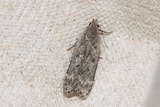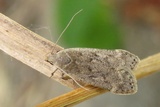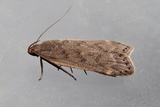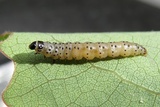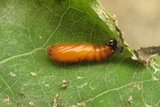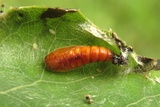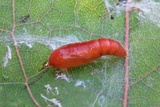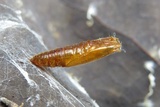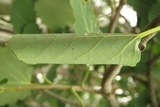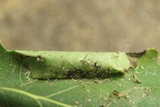Anacampsis populella (Clerck, 1759) Species
Last modified: Dec. 2, 2024, 2:31 p.m.
A fairly common species in many places in Belgium.
Details
- Classification
- Family: Gelechiidae > Subfamily: Anacampsinae > Tribus: Anacampsini > Genus: Anacampsis > Species: Anacampsis populella
- Vernacular names
- Populierenspikkelpalpmot (NL), Poplar Roller, Poplar Sober (EN), Pappel-Palpenmotte (DE)
- Synonyms
- Anacampsis tremulella Duponchel, 1839
- First mention in Belgium
- De Sélys-Longchamps E. 1844. Énumération des insectes Lépidoptères de la Belgique. — Mémoires de la Société royale des Sciences de Liége 2: 1–35. On page 24.
- Status
-
Native
Distribution
Imago
Wingspan 14–20 mm. The moth is a larger Gelechiid species that holds its wings flat at rest. Usually a dull greyish fuscous moth with a transverse pale fascia at three-quarters (if visible) often more curved in the costal half.
The moths of these two species (A. populella and Anacampsis blattariella) are so variable that it is not possible to determine each moth with certainty based on its external appearance.
Species can only be determined through genital examination or breeding!
Genitalia
Male: The gnathos of A.populella is noticeably more robust than that of Anacampsis blattariella, the uncus lacks obvious lateral lobes and the studded section is paramedian, in the long axis of the abdomen.
The valvae of A.populella appear smaller than those of Anacampsis blattariella.
Female: The crucial feature is in the shape of the posterior margin of the dorsal plate of S8 which is broadly rounded with a small apical pimple.
Egg
Females lay eggs about two weeks after hatching. Eggs are laid individually or group-wise at the base of buds or at the end part of branches.
Flight periods
The adults have been observed from late May till the end of October with a peak during July.
Observed on
- Host plant (species):
- Populus tremula
- Host plant (genera):
- Salix and Populus
The larva lives mainly on Populus tremula, less on Salix caprea, Salix cinerea, Salix repens, Salix fragilis, Salix viminalis, Populus alba, Populus nigra and Populus alba x tremula.
Habitat
It occurs in woodland, parkland, gardens, marshy habitats, banks of streams etc...
